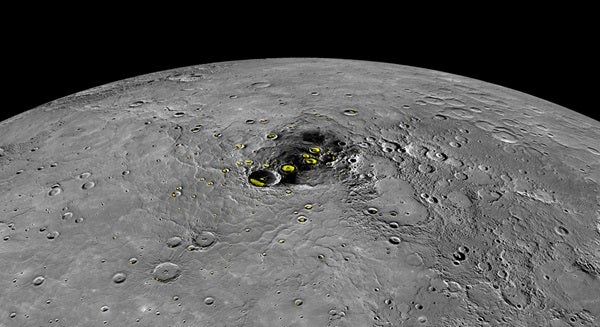Although planetary scientists thought the planet would turn out to be similar to the cold dead Moon, it proved to be far more complex. Mercury has an offset magnetic field, a composition that so far has defied explanation, and irregular pits that seem to be sites where volcanic gases vent from the interior. But MESSENGER’s biggest discovery had to be its detection of water ice at the bottoms of craters near the planet’s north and south poles, where sunlight never shines. Astronomy reported on this breakthrough in its December 2013 issue. Veteran science writer James Oberg won the 2014 Jonathan Eberhart Planetary Sciences Journalism Award from the American Astronomical Society’s Division for Planetary Sciences for “Torrid Mercury’s icy poles.”
Web Extra: Mercury in the spotlight
Planetary scientists have discovered water ice in permanently shadowed craters at Mercury’s poles.
NASA’s MErcury Surface, Space ENvironment, GEochemistry, and Ranging spacecraft — better known by the acronym MESSENGER — completed 4,104 orbits of Mercury from the time it arrived at the planet in March 2011 until it crashed into the surface April 30, 2015.










